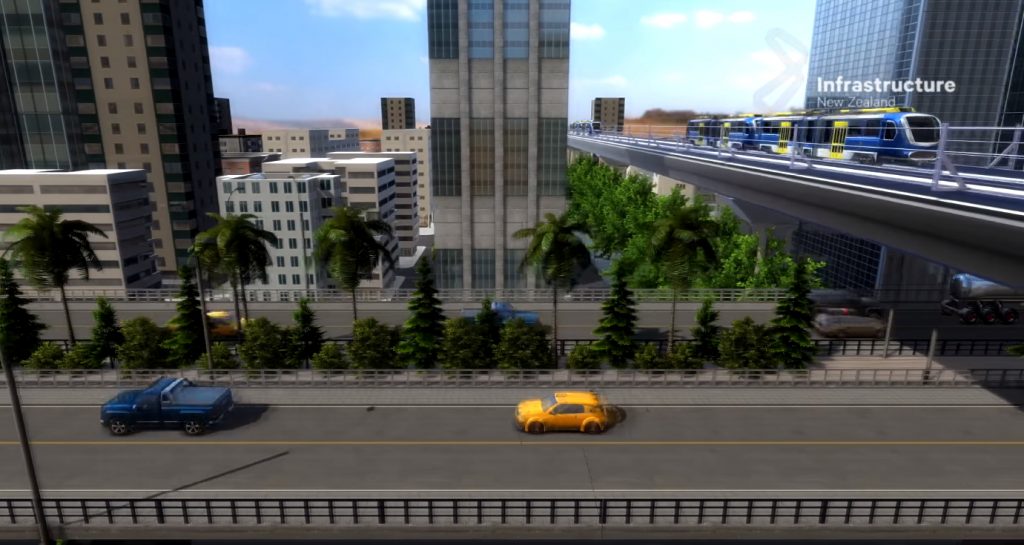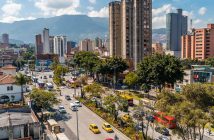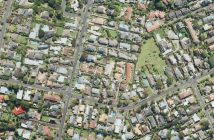Auckland is confronted with a three-sided growth challenge, says a “diplomatically named” discussion document produced by Infrastructure New Zealand.

It pulls few punches. There are not enough homes, there is growing traffic congestion and solving either problem is becoming increasingly unaffordable.
Rapid population growth is exacerbating pressures, but it is not the root cause of Auckland’s growth challenge, the report says.
- The allocations of housing and employment growth in the Unitary Plan are misaligned with Auckland’s infrastructure services.
- The Independent Panel on the Unitary Plan assumed infrastructure could be provided to meet growth. Transport modelling shows that it cannot.
- Growth is everywhere and nowhere and lumpy infrastructure investment cannot keep up.
Infrastructure New Zealand tested the costs and feasibility of delivering an additional 30,000 homes and jobs, over and above current plans, built around rapid transit on undeveloped land.
Five locations around Auckland with sufficient land to support a city of 100,000 residents were examined — Dairy Flat-Silverdale, Kumeu south, Clevedon and Paerata.
“The new Government should target new housing and employment on unzoned land along the rail line through Paerata to meet Auckland’s growth challenge,” says chief executive of Infrastructure New Zealand Stephen Selwood.
“It is cheaper to service with water, energy and transport and strategically located near to employment.
“If the satellite city was supported by a $2 billion upgrade of the rail corridor, we could four-track the southern rail line, allowing non-stop commuter services from the satellite to central Auckland and work places in between.
“That would put the new city within 30 minutes of the CBD and would allow rail freight to be separated from traditional commuter services. KiwiRail could operate with a much greater degree of freedom, helping to get freight off roads.
“Being within 30 minutes of the CBD would also allow much greater densities to be achieved at the satellite than would be possible under a traditional expansive urban development approach.
“Paerata would be a genuine city. It would provide a range of housing choices and with good masterplanning would be much more land efficient and resilient in a changing climate.
“The most exciting aspect is that the city could be designed to deliver all of our aspirations for the future enabling sustainable living and leveraging technology to the fullest extent.
“We can build better, stronger communities, free from the constraints of previous decisions.
“Developing at scale, we can facilitate the shift to more advanced home construction techniques, common throughout the rest of the world. These are critical to lifting productivity and enabling supply to increase.
“Scale will also be attractive to domestic and international developers and investors.
“If the new Government was to prioritise growth in a satellite city near the rail line in the south and tie new zoning to reprioritised transport investment, we could deliver homes at around half the current cost.
“We estimate that an average new home would cost $430,000 to build. That’s including land, development, infrastructure, GST – everything except a return for risk. How the satellite was delivered, including what risks were accepted by the Government, would determine what price homes could be sold for.
“This is the full cost – not a subsidy. It’s what houses should cost if we plan well and break through some of the barriers created by our current planning-funding-governance system.
“Growth can pay for itself if it is well planned.
“The growth model we have in place at the moment not only allows development in areas which cannot affordably be serviced, it is preventing the delivery of housing at its actual, affordable cost. It is enabling sprawl on productive soil and poor quality infill in established suburbs.
“Intensification of extremely expensive brownfield land is not delivering housing at the price or speed which is required.
“Proactively targeting growth around rail is cheaper, consumes less land and will deliver faster housing.
“The satellite city model can be scaled up to take advantage of new investment and provide for Auckland growth over the long term. It can be aligned with much needed investments in education and health to deliver an exemplar city of the future, providing a better urban lifestyle than can be achieved under existing practice.
“The current incremental approach to growth management in Auckland must change. It is too slow, too expensive and is adding to congestion. Integrating urban development and infrastructure “at scale” is the solution,” Selwood says.
A copy of the Innovation City discussion document can be found here.
The Innovation City video can be found here.
About the Contributor
Infrastructure New Zealand is an independent infrastructure think tank. Its stated core purpose is to advance best practice in the development of world class transport, energy, water, telecommunications and social infrastructure through research, advocacy and public and private sector collaboration.




